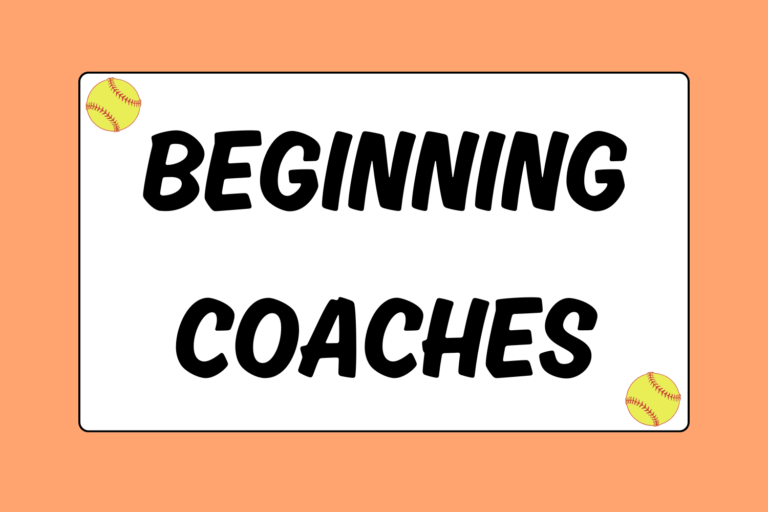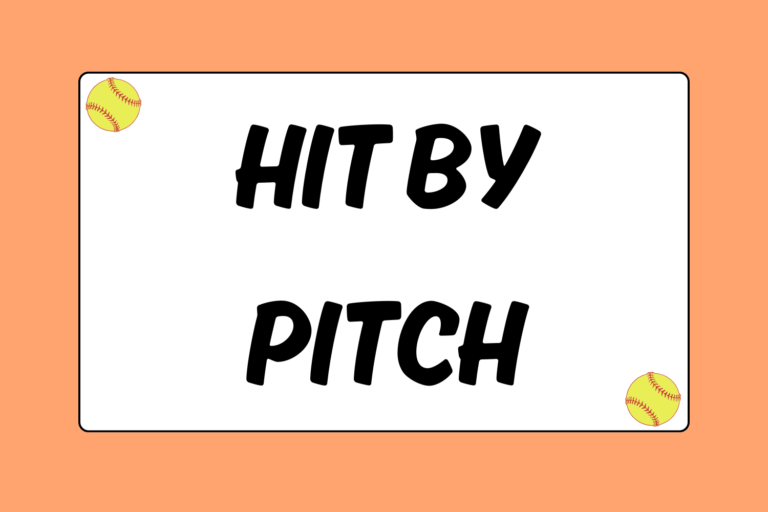Softball outfielders often have to sprint backwards to chase a well-hit ball, though they won’t be able to run forever. This is because most softball fields have outfield fences — a barrier that clearly delineates the end of the outfield area. Some outfielders may be hesitant to chase it full-speed to avoid injury, though that slight hesitation could very easily be the difference between an out and runs scored! If you’re not quite ready to charge the fence at full speed, keep reading. This softball guide will teach you how to get comfortable playing the fence.
Communicate
The first thing to know about playing the fence — as much as it sounds like common sense — is to know that you’re approaching it. This is easier said than done when you’re tracking a ball in the air. As a cohesive three-person unit, it’s the responsibility of the two outfielders who aren’t going after the ball to tell you that you are approaching the fence. Simply yelling, “Fence!” is good enough. If you hear your teammates yelling for the fence, you’ll know you’re getting close and will be able to react accordingly; if they don’t, it could easily result in injury. Needless to say, communication is crucial.
Hot Tip: Know the Types of Fences
Two of the most common types of fences on softball fields are breakaway (made of plastic) and permanent fences (generally chain-link metal). If you are playing with a breakaway fence, feel free to run through it if you can’t stop in time. It won’t hurt and it’s easy to put back together. If you’re playing with a chain-linked fence, though, take the tips in this guide to heart and play it correctly to avoid risking injury.
Feel for It
Knowing that you’re approaching the fence won’t really matter if you don’t know how to play around it. And the key to playing around the fence is being aware of your surroundings, specifically with your hands and feet: Upon hearing your teammates yell “Fence!” start being a little more aware of your surroundings, particularly with your feet and hands.
With Your Feet
Most outfields have warning tracks, which serve one purpose and one purpose only: To warn the outfielders that they are approaching the fence. If the field you are playing on has a warning track, the field will turn from grass to gravel in one quick step. You have to be able to gauge how far you are away from the fence once you hit that gravel; it’s a good idea to get familiar with this during warm-ups. To get the feel for how close the fence is to the warning track, start a few feet from the warning track and start sprinting back. Once you hit the gravel, count how many strides it will take you to get to the fence. Usually it’s only two or three strides, so be aware that you are going to hit that fence quickly.
With Your Hands
Whether your field has a warning track or not, you should get in the habit of using your throwing hand to reach out behind you to feel for the fence. However, you don’t want to run with your arm flailing behind you the entire time — all that will do is slow you down. You should use your teammates’ “Fence!” warning as an indication to start feeling for the fence. If your teammates don’t give you this warning (shame on them!), you’ll have to rely on your intuition and start reaching whenever it feels “right”. Whatever you do, though, don’t extend your arm straight behind you. Keep a bend in the elbow so your arm can give if it hits the fence.
Get Used to It
Once your feet hit the warning track, knowing the fence is so close can be intimidating. If you are uncomfortable with the idea of sprinting back at full speed, try this drill with a partner (or team) to get comfortable playing the fence:
- Before starting the drill, head over to the warning track and figure out how many strides you can take before you hit the fence.
- Then go back and start a few feet behind the warning track.
- Your partner will start with the ball and you’ll start sprinting towards the fence. Keep your eye on your partner.
- Your partner will throw you a fly ball once you near the fence.
- Your goal is to sprint back, feel for the fence and touch it, and then come forward to make the catch. If you need to look back at the fence, do so quickly.
- Repeat 10-15 times. Alternate drop stepping to your left (feeling the fence with your glove) and your right (feeling the fence with your hand).
Sprint to the Fence & Come Forward
Essentially, it would be ideal to sprint as fast as you can to the fence, get there, and then come forward to make the catch. This will put you in the best possible situation to make a great play, because it brings your momentum forward to make the catch and easily transition into your crow hop.
If you can, try to sprint back hard and feel for the fence. Once you’re there, come forward to make the catch. If the hit doesn’t allow this — if it looks like it’s going straight over, for example — reach for the fence and stay there. If you need to catch it on the fence, do it! If you need to jump to rob a homerun, hold onto the fence with your throwing hand to give yourself a little boost and jump at the last second possible.
Hot Tip: Drop Step!
Remember: The key to catching a ball hit over your head is to start with a good drop step. If you’re drop step timing is off, the odds you’ll make a catch get really low.
Go All Out
When see a ball that’s about to sail over your head, the first thing you need is a strong drop step. Then tuck your glove and sprint to where you think the ball is going to land. You have to anticipate its direction, and if it’s heading for the fence, that’s what you’re running towards. Feel for it and listen to your teammates. Being able to play the fence is crucial to becoming a great outfielder, and it will surely make you stand out among the rest!





